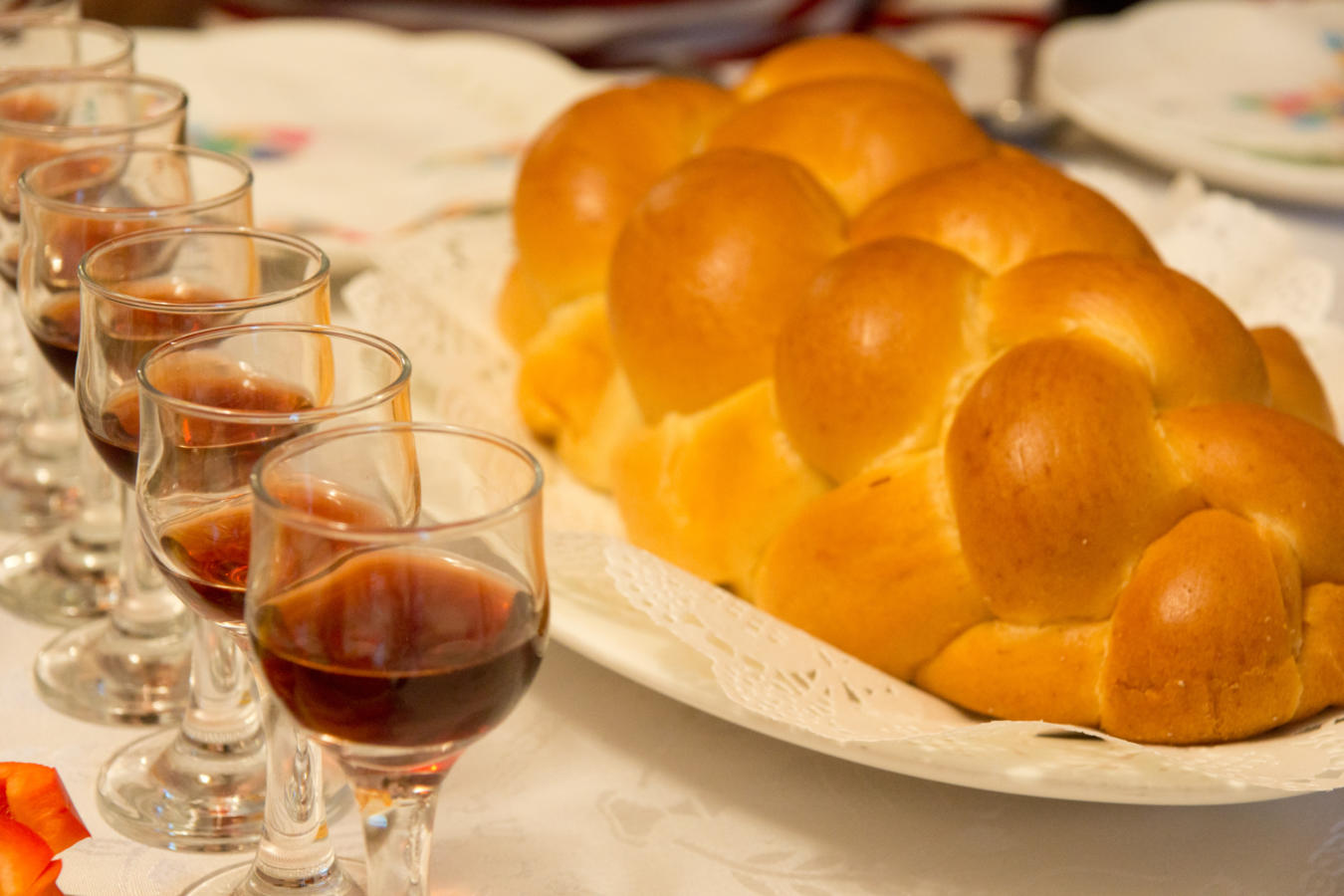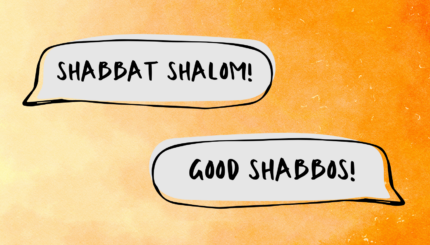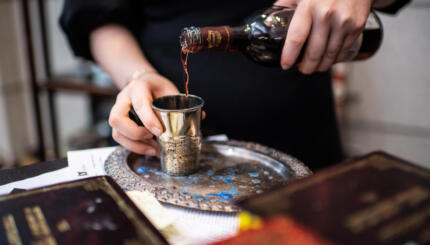Shabbat dinner is a wonderful opportunity to slow down, enjoy good food and company, and connect with Jewish tradition. But hosting a Shabbat dinner for the first (or second or third) time can be intimidating. So here’s a quick guide.
1) Relax
People are generally delighted to be invited to a meal in someone’s home. (And if not, you’re inviting the wrong people!) If you’re not accustomed to hosting dinner parties, it’s good to remember that breaking bread together really does break the ice. This will probably be more comfortable than you think.
2) Gather your supplies
With your help, My Jewish Learning can provide endless opportunities for learning, connection and discovery.
First, you’ll need to make sure you have a few ritual objects: candles, wine, challah, a challah cover. Here’s something to remember: Judaism has endured for thousands of years thanks, in part, to traditions that are flexible and portable. Sure, it’s awesome if you have the family heirloom candlesticks, a fancy Kiddush cup, and a secret challah recipe that knocks everyone’s socks off. But you know what also works? Two tealight candles, an ordinary juice glass filled with wine you started drinking sometime last week, two loaves of any bread you love, and a cloth napkin.
Next, you’ll need a meal. Try to make your Shabbat dinner a little more festive than a weeknight dinner—whatever that means to you. This could be ordering in from your favorite restaurant or cooking up something delicious! If the latter is for you, check out this website on Jewish food for inspiration. It can be fun to divide food into courses—soup, salad, main, dessert—so that people spend more time lingering and talking at the table. But do whatever feels right to you.
Oh, and check to make sure you have a table, chairs, plates, flatware, and glasses enough for your guests. (You can always borrow a chair from a neighbor! And a couch picnic works nicely, too—just plan for it.)
3) Invite your guests
Family, friends, Jews, non-Jews: Shabbat dinner is a great way to get to know new people or spend more time with people you love. Size of the gathering is up to you. Some people love to host large parties of ten or more, some prefer a more intimate number. Decide how many you want, set a time for dinner, and invite away.
And if your guests don’t know much about Shabbat dinner, send them our article on what guests can expect at Shabbat dinner.
4) Familiarize yourself with the rituals
Don’t remember how this works? Or perhaps you are totally new to it? That’s ok! Here’s a rundown of Friday evening home rituals:
- CANDLES: If your guests come around sundown, it is nice to light Shabbat candles together.
- CHILDREN: If you have kids, you might choose to offer them a blessing.
- SHALOM ALEICHEM: Many people sing Shalom Aleichem to welcome the ministering angels down from heaven to escort the bride (Shabbat herself!) to your table.
- ESHET HAYIL: In some families, a spouse might next sing Eshet Hayil, “A Woman of Valor” to a wife.
- KIDDUSH: A blessing over the wine to sanctify the day. You can pass a cup of wine around and let everyone take a sip, or you can offer everyone their own glass of wine for kiddush. If you just want to offer small ritual sips, shot glasses work well.
- HAND WASHING: To ritually wash hands before the meal, many people use a special double-handled mug, filling it with water and pouring multiple times over each hand before saying a blessing. But a regular coffee mug works too. Many people don’t speak between hand washing and the blessing over the challah (up next).
- HAMOTZI: The final ritual before the actual meal is the blessing over the bread. Remove the challah cover, sprinkle with salt or honey of that’s your custom, say the blessing, and then share around. Some cut, some tear the bread.
- MEAL: Bon appetite!
- GRACE AFTER MEALS: There is a traditional blessing following the meal called Birkat Hamazon.
- ZEMIROT: It can be fun to linger around the table, singing special Shabbat songs, called zemirot. These can come before or after the Birkat Hamazon, or both!
Overwhelmed by that list? If this is your first go, you can pare it down. Not everyone does all of this, anyway. Start with candles, Kiddush, and Hamotzi. You can add more later.
5) Cook and set up.
Your table can look many ways, from totally casual to formal and elegant, depending on your personal style. But making it special is a great idea! If you’ve been dying for an excuse to use that funky tablecloth or your grandmother’s china, this is totally it.
6) Have fun.
Remember that Shabbat is a day of rest and renewal. Even if you’re a bit stressed about hosting this dinner for the first time, you’ll soon be a pro and hopefully the practice will soon become a new source of contentment, deepened relationships, and reinvigoration. Shabbat shalom!
Sign up for My Jewish Learning’s RECHARGE, a weekly email with a collection of Shabbat readings and more to enhance your day of rest experience.



